By Rabbi Yair Hoffman for 5tjt.com
Recently, President Yitzchok Herzog indicated to the leaders of the Shas party that one of the greatest political challenges that lies ahead is in the negotiations about the status quo of the Temple Mount.
He said that Itamar Ben-Gvir, the head of Otzma Yehudit, is “feared around the world.” President Herzog made the comment when he thought that the microphones were not recording – a “hot mike.”
“There is one topic that I did not raise because I did not want to attack anyone. You will have a problem with the Temple Mount. This is a critical issue. You have a partner who all the world around us is fearful of. I also told him this between us. Really this is not for publication. I don’t want to make trouble, but I think you have a responsibility.”
President Herzog is named after his illustrious grandfather, Rav Yitzchok Herzog. His grandfather, however, would have felt that it was actually a very serious halachic challenge.
The Gedolei Torah throughout the Doros would have agreed.
According to traditional Judaism, the Temple Mount is certainly the holiest, holiest place in our physical universe. Both Mr. Ben Gvir and Mr. Smotrich are clearly bent on ensuring Jewish sovoreignty on Har HaBayis – which is a laudable and admirable ideal. However, it must be done within the halachic guidelines of the greatest of our Torah sages. What follows is an analysis of the underlying issues.
WHY IS IT CALLED HAR HABAYIS?
Muslims call the Temple Mount the “Haram al Sharif.” But the name, “Har HaBayis” is far far older. Let’s not forget that Muslims invaded Eretz Yisroel only at the year 661 CE. The two mosques that are found on Har HaBayis were completed in the year 692 CE.
Where does the name “Har HaBayis” come from?
Rav Shimshon ben Abraham of Sens (c. 1150-c.1230),was one of the leading students of Rabbeinu Tam. He is known as the Rash MiShantz and is the “Rashba” that is cited in Tosfos. In his commentary on the Mishnah (Midos 2:1), he writes that the name is based upon a verse in Isaiah (2:2), “Nachon yiheye har bais hashem b’rosh heharim – The mountain of Hashem will be on mountaintops.”
***Please help support the Hachnassas Kallah General Fund that Rabbi Yair Hoffman works with. Your support is most appreciated.. Click Here!
WHERE IS IT LOCATED?
In order to determine whether we may at all enter Har HaBayis, we must first get a background in the geography of the area and where Har HaBayis is located, and then some of the history.
THE GEOGRAPHY
The Kidron Valley, Nachal Kidron, is the valley on the eastern side of the Old City of Jerusalem, separating Har HaBayis from Har HaZeisim. It continues eastward through the Judean Desert, toward the Dead Sea. It travels some 20 miles, and slopes downward in terms of elevation, a total of 4000 feet along the way.
In TaNach it is called “Emek Yehoshafat” or Valley of Jehosophat. It appears in the prophecies of Klal Yisroel regarding Moshiach, which include the return of Eliyahu HaNavi, followed by the arrival of Mashiach, and Milchemes Gog uMagog, and Judgment Day.
The Tyropoeon Valley (also known as the “Valley of the Cheesemakers”) is the name given by Josephus the historian (Wars of the Jews 5:140) to that part of the valley that was within the Old City of Jerusalem.
Once, this valley separated Har haBayis from Har Tzion Zion and emptied into the valley of Hinnom. This is no longer true. The Tyropoeon Valley is now completely filled up with debris, and has become a plain of sorts.
It is spanned by bridges including Zion Bridge. The bridges were the method of communication between Herod’s palace on Har Tzion and the Bais HaMikdash.
HAR HABAYIS
So where is Har HaBayis? It is what forms the northern portion of the narrow part of that hill that slopes from the north to the south. It rises above the Kidron Valley to the east and Tyropoeon Valley to the west. The slope from north to south is very sharp.
The peak of Har HaBayis reaches a height of 2,428 feet above sea level.
THE HISTORY
In around the year 19 BCE, Herod the Great extended the natural plateau of Har HaBayis by enclosing the area with four massive retaining walls and filling up the areas with earth and rocks.
This artificial expansion resulted in a large flat area. This flat area is now what makes up the eastern section of the Old City of Jerusalem. The trapezoid shaped platform measures a total of 37 acres. Its dimensions are 488 meters on the west side, 470 meters on the east side, 315 meters on the north and 280 meters on the south side. In total it is approximately 150,000 square meters.
The northern wall of the Temple Mount, together with the northern section of the Kosel, is hidden behind buildings.
The southern section of the western side is open and is the Kosel as we know it. The plaza behind the Kosel was made by city planners after we had recaptured eastern Yerushalayim after 1967.
The retaining walls on these northern and western sides go down many meters below the ground. A northern portion of wall on the west may be seen from within the Western Wall Tunnel, which was recently excavated through some of the buildings.
On the southern and eastern sides the retaining walls are almost completely visible to their full original height. The platform itself was separated from the rest of the Old City by the Tyropoeon Valley. This valley is no longer the deep valley it was, however.
The platform can be reached through a street in the Muslim Quarter called “Bridge Street” – a funny name. Presumably, it is called that because it is a street on a huge bridge but the area that was below the bridge was filled up. However, you can still see that it was once a bridge from the view in the Western Wall Tunnel.
Now let’s get to the Halachic section.
WHY MOST POSKIM FORBID
As mentioned in the beginning, most major poskim forbid walking on Har HaBayis nowadays. Some Rabbis disagree with them, however. Those Rabbis who permit it draw a distinction between the current area of the Temple Mount and the dimensions of Har HaBayis that are discussed in the mishnah in Midos (2:1).
DISCREPANCY BETWEEN MISHNA AND NOW
The Mishnah tells us that Har HaBayis is 500 amos by 500 amos. The current area of Har HaBayis is 1,601 feet by 1,542 feet. On the north-south side, it is less (1,033 and 919 feet).
The first supposition that those who permit it make is that the current state of Har HaBayis is that it is double the size of what is mentioned in the mishnah.
THREE PROBLEMS
There are at least three problems with this. Firstly, Torah sources sometimes round off or approximate measurements. The number 500 by 500 can certainly be an approximation. It also may be a total square ammahage, so to speak.
The second problem is that we do not know the exact dimensions of an amah. Some say it is 18 inches; others say 21.25 inches or 23 inches; and a good argument can be made that it is less than 18 inches as well.
The third problem is that the midos discussed in the Mishna may have or may not have included the thickness of the wall – which may have been 27 feet thick according to some sources – this could make it better or make it worse. It could also have referred to an early thickness of the wall rather than a later one.
A FOURTH PROBLEM
There is also the view of Rav Emanuel Rikki in his Aderes Eliyahu in a Kuntrus Mei Niddah #37 that for matters of Kodesh – an Ammah is different – it is an Ammah and 2/3. Now, one may think that this ridiculous, but Rav Rikki is the author of one of the most fundamental texts in Kabbalah. The Vilna Gaon held him in very high esteem.
If Rav Rikki is, in fact, correct then we have to re-analyze what Herod did exactly and the expansions that he made. Do we really want to deny the Kabbalistic traditions here?
All these four factors alone throw a serious monkey-wrench into the calculations of those who permit treading upon the most holiest place in the universe.
A NEW ISSUR
The second supposition made by those who permit entry onto Har HaBayis is that Rashi’s p’shat in the Gemara in Yevamos (7b) is in error. Most Poskim contend, however, that Rashi’s p’shat is the authoritative understanding of the underlying issue, and has been the normative halachah for many centuries.
But let’s give a brief background.
Yehoshafat, the king of Yehudah, was under intense pressure. The powerful armies of Ammon, Moav, and Seir had combined forces to attack Eretz Yisrael (see Divrei HaYamim II 20:5).
WHAT IS CHATZER CHADASH?
Frightened, Yehoshafat turned to Hashem, declared a fast, and gathered the people to Yerushalayim to the Beis HaMikdash to daven fervently to Hashem. He davened in the “new courtyard.”
THREE INTERPRETATION TO “NEW COURTYARD”
There are three interpretations to the term “new courtyard.”
- The RaDak and Metzudas Dovid both suggest that it is possible that some sort of improvement was made in the courtyard.
- The Gemara in several places, according to Rashi, tells us that there was a new enactment involving the Beis HaMikdash, promulgated at that very time, forbidding a t’vul yom from entering into the Camp of the Levi’im-the Temple Mount. This additional enactment endowed the entire Makom HaMikdash with a higher level of sanctity. The term “new courtyard” refers to this new enactment, and the courtyard that is referenced is the entire area.
- The third interpretation is that the “new courtyard” refers to the ezras nashim only.
AUTHORITATIVE PSHAT
The Kaftor Vaferach (a Rishon who tells us the minhagim of the Jews in Eretz Yisrael and the Makom HaMikdash) in chapter six tells us that Jews observe the second definition of “new courtyard” as being the exact walls of the then current Har HaBayis. Since he lived in the 1300s, the reference is to our contemporary wall dimensions.
The Teshuvas Ramoh (#25) cites this ruling as authoritative and, until very recently, it has always been observed.
The Sefer HaManhig (s.v. “Baal keri”), citing the rulings of the Geonim, explains that it was only during the Temple times that a t’vul yom could immerse and wait a day. However, nowadays, when it is impossible to rid ourselves of the impurity of the dead, removing the tumah of baal keri is impossible while we still retain the impurity of the dead.
Why?
Because regarding a tvul yom it says, “uvah hashemesh v’taher” – he needs to be completely tahor and on account of the fact that nowadays we have no way to purify this person cannot because he is still tamei mais. Let’s not forget, however, that in the times of the Mishna and in the times of the early Yerushalmi – there was still a way to be metahair with Para Adumah ashes – and it was only lost much later.
So even though the mishnah in Keilim indicates that the impurity of the dead does not necessarily directly impinge upon going onto Har HaBayis itself, it does do so by not allowing our tumas keri to be completely removed.
THEY DISAGREE WITH THE CLASSICS
Those that advocate treading upon Har HaBayis either disagree with this Sefer HaManhig, with the Geonim he cites, or have figured some other reading of this Sefer HaManhig.
This position fits the normative practice cited in Rav Ovadiah Bartenura’s letter to his father that Jews would not go up to Har HaBayis even if the Muslims would have allowed them (the letter is cited in the responsa by Dayan Weiss).
[It should be noted that Rav Moshe Feinstein I.M. O.C. vol. II #113 does seem to disagree with the Sefer HaManhig’s understanding of undoing impurity, but the other issues are still relevant. Also, most of the other poskim seem to abide by the Sefer HaManhig.]
HIGHER THAN IT WAS
A third supposition that is made, is that the area of Har haBayis has placed layer after layer and it is much higher than it was originally. The Gemorah in Psachim 85b cites Rav as ruling that Gagin v’aliyos lo niskadshu.. Rashi explains that this refers to the roofs of Yerushalayim regarding kedushas yerushalayim for kadshim kalim or to the lishkos of the azarah roofs. In Shavuos 17b, Rashi writes that the gagin and aliyos were never sanctified – just the floors up to the roofs.
ATTEMPTED ANSWERS
There are a number of attempted answers to this. The first is that this concept is misunderstood because it refers to the original buildings. However, after the buildings are gone, the floored area still has kedusha and therefore when a building is built afterward the kedusha is not blocked. This is clear in the Radbaz itself (Siman 691). Furthermore, Rav Zelig Reuvain Bengis in his liflagos Reuvain volume 6 writes that this is only when there was a space, but if it is made of solid material there is still kedusha there.
Some, believe it or not, question the whole archaeology of it because it says “aru aru ad hayesod bah” – that it was entirely destroyed down to the foundation. They suggest that it is not higher than it was.
IS THE AL SAKARA THE EVEN SHESIYA?
Another supposition made by those who advocate going onto Har HaBayis is that their measurements are accurate based upon the idea that the current rock known as the “al Sakara” is one and the same as the Even Shesiya discussed in the mishnah in Yuma. Many Torah authorities as well as secular archaeologists question this identification.
Some say that it is the Makom HaMizbeach (Rav Shlomo Goren). Others say that it is, in fact, the Even Shesiya.
WHY DID WE NEED NEVIIM?
If it is the Even Shesiya, another question arises. When the second Bais HaMikdash was rebuilt after our return from Bavel – why did they need neviim prophets to establish its location?
Why couldn’t they calculate based upon this Even Shesiya that was known? This question is brought down in the Sefer Avodah Tamah. Some Poskim have concluded from the strength of this question that it is not the Even Shesiya.
WHERE WAS THE EVEN SESIYA IN TERMS OF THE BAIS HAMIKDASH?
But even if it is the Even Shesiya, where was the even shesiya in terms of the Beis HaMikdash? Was it in the center, the west side of it or the east side of it? Perhaps this was the safaik that they had when they built the second bais haMikdash and now it is known. The problem with this is that the debate is still after Bais HaMikdash #2.
Another problem is that the water coming in, which was used as a mikvah for purifying the Kohanim does not correlate well to this location as the even shesiyah. Drawing water from it would produce the problem of drawn water.- mayim she-uvim. There are a few solutions to this problem, but who knows which one is the accurate one?
THE RADBAZ
While some of those who advocate going onto the Temple Mount cite the Radbaz (responsa #691), who does make this identification with the even shesiya, there are some very serious discrepancies in the responsa of the Radbaz that have been pointed out by the leading poskim of the generation, including Rav Ovadiah Yoseph, Rav Waldenberg, zt’l (Tzitz Eliezer vol. X #1), Dayan Weiss (vol. V #1), and Rav Betzalel Zolti.
ISSUES OF KAREIS
When dealing with an issue of Kareis the custom in K’lal Yisrael has always been to be stringent. Here we have four leading poskim who tell us with very stern warnings, “Stay Away!” Also, when it was first recaptured in 1967, a letter went out signed by 52 of the top Poskim in eretz Yisroel. Why ignore them?
THE OLD PICTURE
A fourth assumption made by those who advocate treading upon Har HaBayis is based upon an old picture that was found of Har HaBayis. The assumption is that the raised platform in the photo is the actual Har HaBayis referred to in the mishnah. This too, however, has numerous problems.
There are further indications from various sources in the Acharonim that the walls extend past the areas pointed to in the picture (Pe’as HaShulchan by a student of the Vilna Gaon, Rav Yisroel of Shklov, Eretz Yisrael 3; addendum to Kaftor Vaferach).
RAAVAD VERSUS OTHERS
Many of those whose opinions promote going onto Har HaBayis do rely to some degree on the opinion of the Raavad, who rules that the sanctity of the Temple Mount is not as in force as it was when the Temple stood. Rambam, of course, disagrees, and the Mishnah Berurah and magain avrohom 561:2 rule fully in accordance with the Rambam.
This is also the overwhelming opinion of the Rishonim – I will list them: Sefer HaTruma in his Hilchos Eretz Yisroel, SMag mitzvas assei 163 – he writes that what made it kadosh was the shechina and that never gets undone, whereas other issues were kadsh only leshaasa – a kivush for example regarding trumos and maasrosm Rashi avoda zara 13a venishchatai mishchat – we are obligated on shechutei chutz mideoraisa nowadays – like the rambam, Rash miShantz shviis 6:1, Tosfos Yuma 44a, shvuos 14b, Tosfos HaRosh yevamos 82b – gives a reason because it is called a nachalah which can never be undone, Yereim siman 277, Chinuch in ten different places 284, Tashbatz vol III #201, Rashba megillah daf yud , Ramban shavuos 14b, Ritvah Megillah 10b, and Kaftor vaFerach. Plus, we have the opinion that the Raavad was only referring to the deoraisa aspect of things but miderabanan he was machmir.
Who, among the Rishonim, rules like the Raavad? There is one tzad in the Meiri like this, but elsewhere he says that the psak is like the Rambam.
There is also the notion fund in Rav Chaim Soloveitchik zatzal that there are, two dinim, two types of laws, in the issue of the Temple’s holiness – kedusha. The Raavad was only referring to the kareis din but the other din of kedusha is still in effect even though there is no karais.
WHO IS A ZAV?
There is also the issue of whether everyone in contemporary times has the halachic status of a zav. Both Dayan Weiss and the Tzitz Eliezer rule that everyone does. Those who advocate for treading on Har HaBayis disagree with this contention.
Finally, Rav Kook (Mishpat HaKohein #96) himself writes that even according to the view of the Raavad, there is still a Rabbinic prohibition of entering the Temple Mount. He explains that Chazal felt that the reverence and respect for the Makom HaMikdash is greater in not going there, than in visiting it.
Modern advocates of treading on Har HaBayis indicate that Rav Kook would have changed his mind if he had been given their new evidence. But intellectual honesty would yield quite a different theory.
In short, the overwhelming view of poskim, chareidi and otherwise, simply do not agree that Jews may or should go up to Har HaBayis. While the sentiment is certainly understood, and one cannot fault those who genuinely believe that it is halachically permitted, it is still a very serious issue.
Rav Betzalel Zolti zt”l in his Mishnas Yaavetz (OC Tisha B’Av 47:4) writes that even someone who immersed properly in a Mikvah and purified himself from any Tumah that emits from his body is still prohibited from entering any of the area of Har HaBayis, as on account of the sheer passage of time we can no longer accurately identify the Makom HaMikdash. Whomsoever enters there is liable to accidentally enter the Mikdash or the Kodesh Kodashim, and would stumble Heaven forbid in the sever prohibition of Karais.
The author can be reached at [email protected]
Please help support the Hachnassas Kallah General Fund that Rabbi Yair Hoffman works with. Your support is most appreciated.. Click Here!

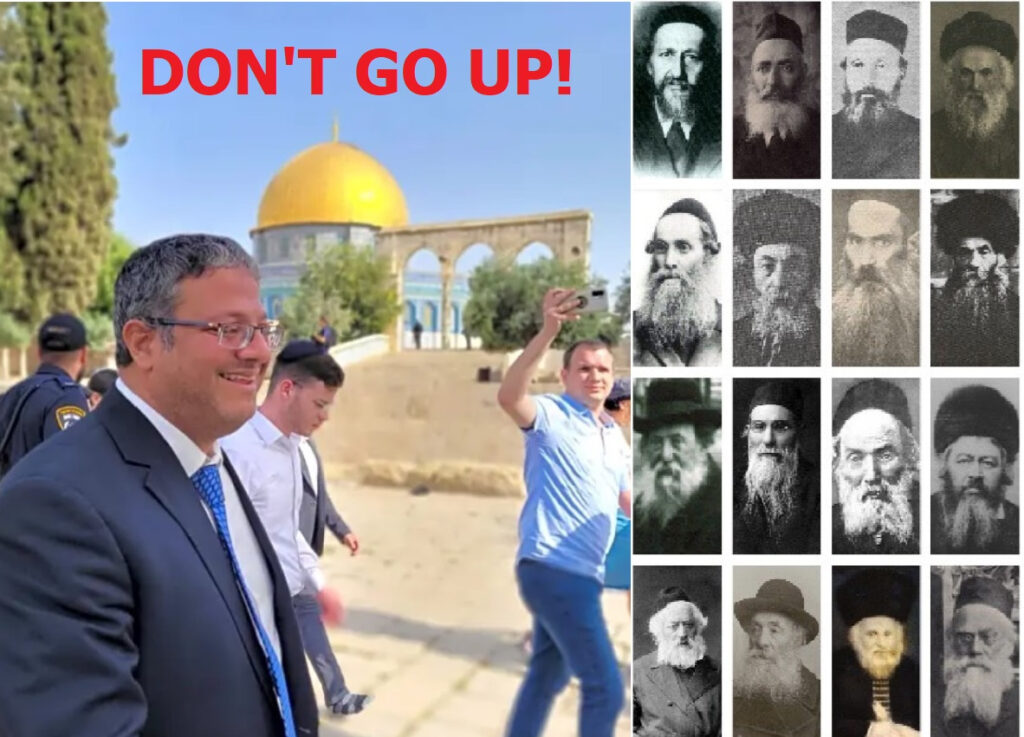
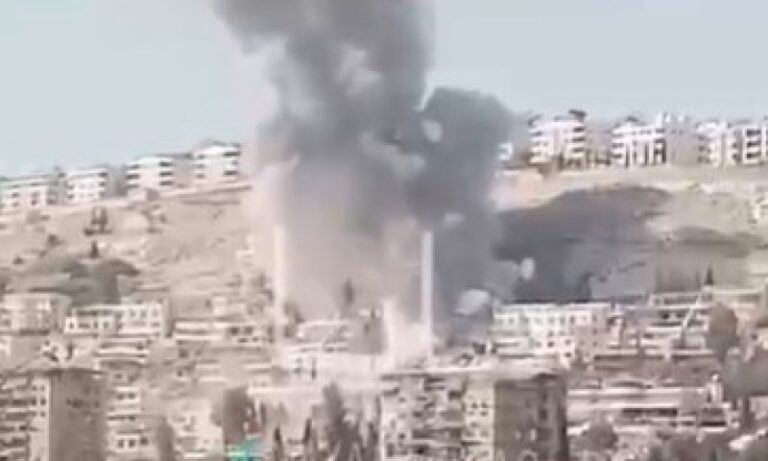
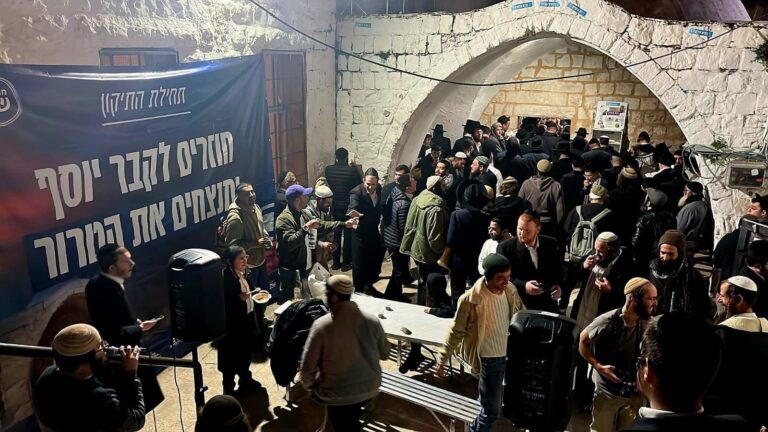

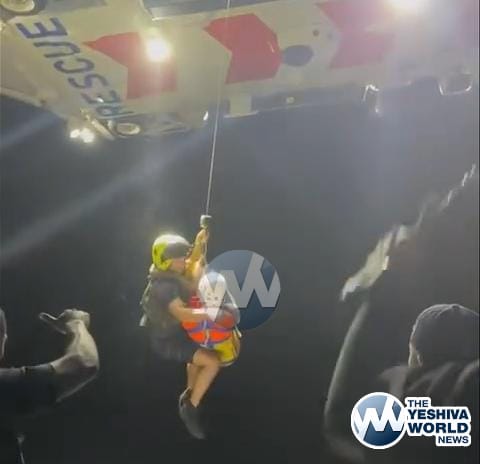


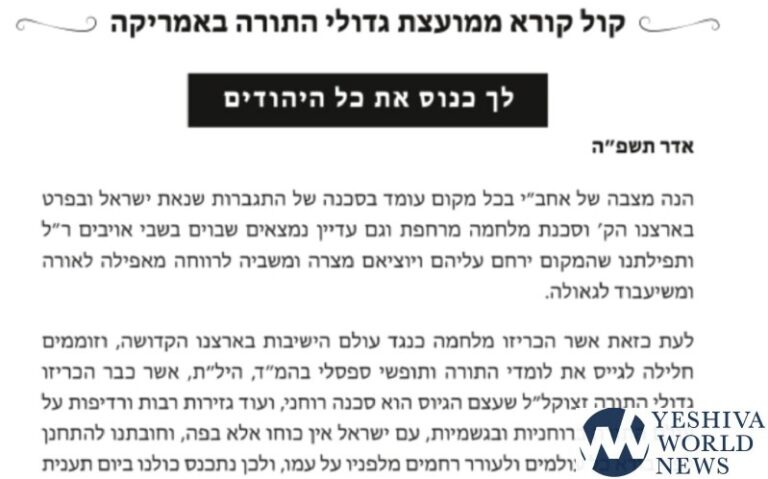
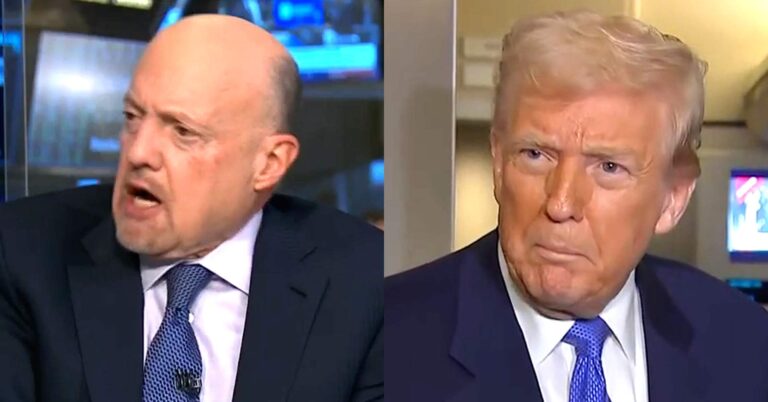
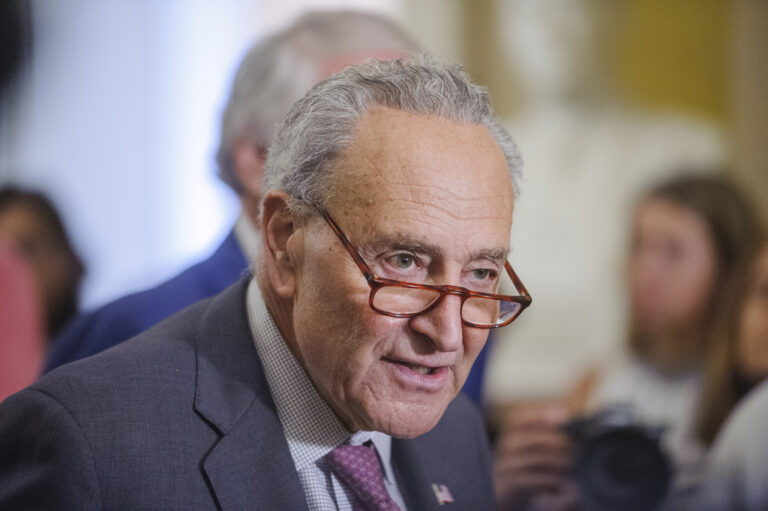

16 Responses
Thank you Rabbi Hoffman for this very informative article. Excellent summary.
ok whether or not it is an issur כרת, why on earth do we allow the muslims and every random tourist goy to walk freely around OUR har habayis! what a huge and epic ENORMOUS chillul hashem every living second of every day that we allow the muslims to be there!
that is the biggest problem with this. if the Muslims weren’t there those yidden who choose to go up “to exercise Jewish sovereignty” will not need to do so as we would already have full control of it.
the best thing to do would be to clear EVERYONE off until moshiach comes and place a sign stating “Future Site of the Third Beis Hamikdash” and leave it at that. The whole area can just become one big fenced-off grassland until hashem gives us instructions on how to proceed next.
A shogeg is a chatas, not cares, but if they KNOW they might really be going there, maybe that is a meizid
“Recently, President Yitzchok Herzog…”
The current President of the United States is not Isaac Herzog. Therefore, when referring to a President of a country other than the United States, the country name should be mentioned before the title.
Like this:
“Recently, Israeli President…”
“Both Mr. Ben Gvir and Mr. Smotrich are clearly bent on ensuring Jewish sovoreignty on Har HaBayis – which is a laudable and admirable ideal.”
This is inaccurate. They are bent on ensuring Zionist, not Jewish, sovereignty.
In which halacha sefer can one find that during galus – and when the nations are up in arms over Har HaBayis – it is a “laudable and admirable ideal” to have Zionist control over Har HaBayis?
What is their to laud and admire? Zionism? That’s not what any gedolim laud and admire.
Even if he really meant “Jewish control over Har HaBayis”, the question still remains.
“The plaza behind the Kosel was made by city planners after we had recaptured eastern Yerushalayim after 1967.”
The Zionists do not represent world Jewry despite their persistent century+ old Big Lie that they do. The Zionists are not representative of anyone other than themselves.
The Zionist entity was formally founded in 1948. The Zionists, not “We”, captured for the first time, not “recaptured”, what is known as “East Jerusalem” in their war of 1967.
It is true, however, that prior to the Zionist invasion, and up to the declaration and formal creation of the Zionist shmad State, Jews were able to and did go to the Kosel to daven.
Only after the Zionists declared their State and forced Jordan into entering their war due to the Zionists waging war on Jerusalem which was supposed to remain an international city, did the Jordanians repel the Zionists from Jerusalem and then forbid Jews from praying at the Kosel.
In other words, the loss of the ability to pray at the Kosel about a century ago was a direct result of the Zionists’ war in 1948. That’s why Zionists write “recapture”, even though that is inaccurate.
Don’t most of the poskim that forbid entering the Har Habayis also prohibit men from using an electric shaver?
Yet, many frum men ignore this potential issue d’oraysa by relying on a verbal psak that Reb Moshe gave to one individual (to use the old shavers that leave behind stubble – not the modern day ones that are k’ain ta’ar).
Do we pick and choose which hanhogos we keep based on psokim of gedolei Yisroel not to enter HarHabayis and which pesokim we rely on daas yechidim (at best) contrary to the well publicized and often repeated pisokim of the Chazon Ish, Reb Chaim Kanevsky, Chofetz Chaim and literally dozens of similar poskim that we all know who totally prohibit shaving?!
Is it because it is convenient not to enter harHabayis so I can “afford” to follow majority halachic opinion here) while it is inconvenient to not shave, so I can be a chareidi (choreid lidvar Hashem) and still ignore the psak halacha issued by our greatest poskim because it is inconvenient to grow a beard, thus I will rely on a questionable, unpublished daas yochid – even one as great as Reb Moshe, which may not even apply to me today?
The shaving is permitted and even encouraged in many Alef Litvish yeshivos, but when it comes to every far fetched chura, the yeshivas encourage their people to keep chumras on top of chumras (- add a chumra each week) but ignore piskei halacha of Gedolei Yisroel that prohibit shaving. Is that not ma’asei sotton?!
Rebbitzen Goldenpickanicerscreenname:
Believe it or not, there are rabbonim today, followers of Rav Moshe and others, whom you can ask, and who permit shaving with certain normal modern shavers.
So, no, they are not relying a verbal psak to an individual, or whatever it is you invented.
Baby Squirrel:
We are in galus and the gentile nations are currently in political control over the world, including the Temple Mount, as Hashem decreed.
The Zionist invasion of the area doesn’t change any of that.
Chumra of the week. I don’t hold of the eruv. I keep yoshon in chutz l’aretz. I don’t accept this kashrus supervision…..but i shave my beard, in doing so I reject the psak of countless poskim such as Chofetz chaim, Chazon Ish, Reb Chaim Kamevsky, the Steipler etc …but I am a chareidi that is “machmir” and keeps loads of chumros, bet you never even heard of ally chumros….but I shave…hypocracy at it’s finest.
Chumra of the week… I don’t hold of the eruv… I keep yoshon in chutz l’aretz… I don’t accept this kashrus supervision…..but I shave my beard, in doing so I reject the psak of countless poskim such as Chofetz Chaim, Chazon Ish, Reb Chaim Kanevsky, the Steipler etc …but I am a chareidi that is “machmir” and keeps loads of chumros, bet you never even heard of all my chumros….I am super frum, way frumer than Shulchan Oruch…that’s for the maykilim…but I shave…an issur d’oraysa…. because I rely on some heter ….hypocracy at it’s finest.
The Steipler Gaon attested to the fact that the Chofetz Chaim prohibited shaving even with (non-electric) hand clippers (Orchos Rabbeinu, vol. 3, p. 105). [At their lowest settings, these clippers do not remove the hair as closely as electric shavers do.]
Rav Yosef Sholom Elyashiv wrote in a teshuvah published in his sefer Kovetz Teshuvos (vol. 1, sec. 32) that the electric shavers of today are unquestionably infinitely worse than those that existed in the time of the Chofetz Chaim and were prohibited by him. This is because modern machines shave much more closely to the skin, and shaving with them is an “issur Torah mamosh” — a definite and absolute Torah prohibition.
Rav Chaim Kanievsky wrote in the name of his father, the Steipler Gaon: “It has already been publicized that the Chofetz Chaim in Likkutei Halachos on Makkos prohibited even manual (non-electric) shaving machines; how much more so are today’s electric shavers forbidden since they are more advanced.”
Additionally, Rav Shach wrote (Michtavim U’Maamarim 3:75): “To the questioner, may he be well: Concerning shaving the beard with electric shaving machines — see the sefer Likkutei Halachos on tractate Makkos (by the Chofetz Chaim), p. 14b (Ein Mishpat op. cit.), where he writes that it is prohibited, and one may not be lenient in this matter. It is also well-known that the Chazon Ish ruled that the use of all shaving machines is forbidden. This is my response, (signed) Elazar Menachem M. Shach.”
See also Shaalos u’Teshuvos Minchas Yitzchak (vol. 4, sec. 113, and again in vol. 7, sec. 63): “Electric shaving machines are much more severe [than the machines forbidden by the Chofetz Chaim], as is well known.”
In a letter dated Parshas Re’eh, 5736, Rav Moshe Heinemann, a foremost disciple of Rav Aharon Kotler, confirmed the accuracy of what is written in Shaalos u’Teshuvos Minchas Yitzchak. He added that since the Chofetz Chaim prohibited even the (non-electric) shaving machines of his time, Rav Aharon Kotler was of the opinion that shavers are forbidden to use. Rav Heinemann stated further that his Rebbe, Rav Aharon Kotler, would not issue a heter even for trimmers such as the “Outliner” (which do not remove the beard hair entirely and leave some stubble), out of deference to the Chofetz Chaim.
Poskim that state cutting the beard with scissors is forbidden include the Chacham Tzvi (Teshuvos Chacham Tzvi, Tosafos Chadashim, sec. 26), the Maase Rokeach (Makkos ch. 3), the Merkeves HaMishnah (Rambam Hilchos Avodah Zarah), the author of the Chasdei Dovid (printed with the Tosefta in every standard Gemara) in his Teshuvos Michtam L’David (Y.D. sec. 28), and the Rogatchover Gaon in his sefer on the Rambam (Tzafnas Pane’ach, Hilchos Avodah Zarah), several Sephardic sages such as the Saba Kadisha, the sources cited by the S’dei Chemed (Klalim, Lamed, sec. 116), the Darchei Teshuvah (Y.D. 181 sec. 2), Teshuvos Minchas Elazar (vol. 2, sec. 48), Teshuvos Kol Mevaser (vol. 1, sec. 19), and, in our generation, the late non-Chassidic Gadol Hador, Rav Chaim Kanievsky (in his Orchos Yosher, ch. 5), where he wrote:
“Targum Yonasan states that one who [cuts his beard] transgresses the prohibition of ‘A man shall not wear a woman’s dress,’ which includes even cutting the beard using scissors. Sefer HaChinuch states the same, adding that one also transgresses the prohibition of ‘You shall not follow their [non-Jewish] rules.’ This is quoted by the Chofetz Chaim in his Sefer HaMitzvos HaKatzer (prohibition 177).”
Hakatan – ” there are rabbonim today, followers of Rav Moshe and others, whom you can ask, and who permit shaving with certain normal modern shavers.”
Ineed, there are rabbonim today who permit entering the har habayis too, but who chareidi listens to them when the known Gedolei Yisroel prohibited it.
THAT IS MY POINT! Who chareidi listens to some rabbonim that permit shaving when the Gedolei Yisroel prohibited it????
Who listens to “some rabbonim today (followers of Rav Moshe and others)” that disagree and ignore the psak of Rav Chaim Kanievsky (in his Orchos Yosher, ch. 5), Rav Yosef Sholom Elyashiv, The Steipler, Rav Shach (Michtavim U’Maamarim 3:75), The Chofetz Chaim (Sefer HaMitzvos HaKatzer prohibition 177), Rav Aharon Kotler, and dozen of our greatest rabbonim and poskim???
In other words, do we need to follow the psak of the greatest of our Gedolim and Poskim (on BOTH shaving and Har Habayis), or can we rely on some rabbonim who hold different then our greatest poskim and permit it???
Sure we look down our upturned noses at the Modern Orthodox that follow every kula available. We mock the Dati Lemu – they aren’t “really” frum like us. We are so holier than thou!
Yet we also rely on flimsy daas yochid rabbis that permit shaving! We rely on psokim of “rabbis” which are directly contrary to Gedolei Haposkim that explicitly prohibit shaving!
What makes us any different from the Modern Orthodox? Is it that we keep convenient feel-good chumros which make us feel so so so holy (kodosh, kodosh, kodosh), while at the same time we are transgressing b’meizid issurei d’oraysa of shaving according to ALL Gedolei Haposkim listed above plus dozens more, when shaving beards?!
Are we really any different than the Modern Orthodox or Dati Leumi when we ignore Gedolei Haposkim?
They go on har habayis, we shave – both are held to be ossur by the same Gedolei Haposkim.
You shouldn’t go up because it is under military occupation by a regime that will have its thug pons literally beat you to a bloody pulp, slander you to blame you for your bruises, put you in administrative detention indefinitely, possibly electrocute you and chemically lobotomize you by Soviet-trained physicians if you step out of line up there for a moment or resist an assault or try to do a mitzvah or something. Seriously, it’s a shas hashmad. Whoever controls the regime literally wants you dead.
I raise questions that make people squirm and feel uncomfortable with the dishonesty hidden under their black Borsalino hats.